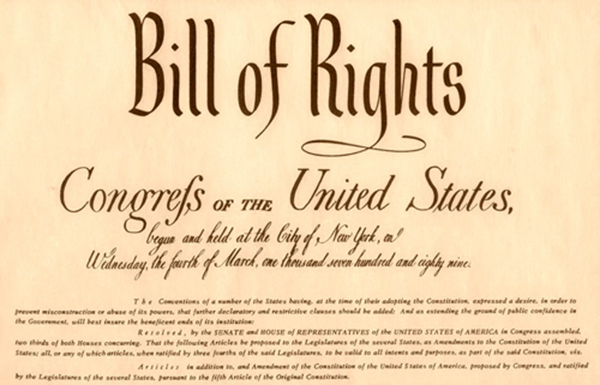Immediately after the Constitution was published, opposing and supporting groups were formed towards the ratification debate. Before the Constitution could be established as law of the country nine of thirteen states were required to ratify the document. Those figures that had been involved in drafting the document such as James Madison, Alexander Hamilton, and Benjamin Franklin were influential as those supporting the Constitution, also known as Federalists.
These Federalists wrote a highly influential group of essays entitled The Federalist Papers. However, much opposition still remained from Anti-Federalists, and in turn a compromise was needed which led to the Bill of Rights document. The Federalist Papers and the Bill of Rights compromise both played a key role in the ability of the Constitution to be ratified.
The Federalist Papers
The Federalist Papers were a series of 85 persuasive essays written by James Madison, Alexander Hamilton, and John Jay and originally published in the New York newspaper. The essays were written in response to many claims appearing in the New York newspaper of the Anti-Federalists that the Constitution would eliminate all the rights Americans had fought for in the Revolution. Once published in newspapers, the impact of the essays on the ratification debate was immediate. The 85 essays were in such high demand that they were published in a bound book entitled The Federalist Papers.
The essays provided all the reasons why the American peoples should support the Constitution, and rebutted against all prior criticism. The essays accomplished much of the convincing of the public that this new Constitution was necessary and explained clearly what the Constitution stated. With this document, the Federalists began to win debates at state conventions, and eventually gained the ratification of the needed nine states.
The Bill of Rights
Even with the nine states needed, it was important to gain the ratification of the larger states such as Virginia and New York to make the United States of America truly united. Anti-Federalists continued to argue that the Constitution robbed them of the rights and civil liberties they had won in the Revolution. Fearing large taxation, loss of all power from state governments, and a loss of basic human rights the Anti-Federalists argued against ratification unless a compromise was made. Anti-Federalists insisted on the people’s rights being declared in the Constitution along with the power of the government. The Bill of Rights was born to appease this necessity.
The Bill of Rights, though not necessary to gain ratification, accomplished a united front on the ratification from all the states. The foundation of the opposition between Federalists and Anti-Federalists was based on the Federalist fear of sovereign power of the people and Anti-Federalist fear of returning to a tyrannical government robbing them of all rights and power. The Bill of Rights accomplished calming these fears by establishing an outline of what the government can do in the Constitution along with the rights of the people being in ink in the Bill of Rights.








